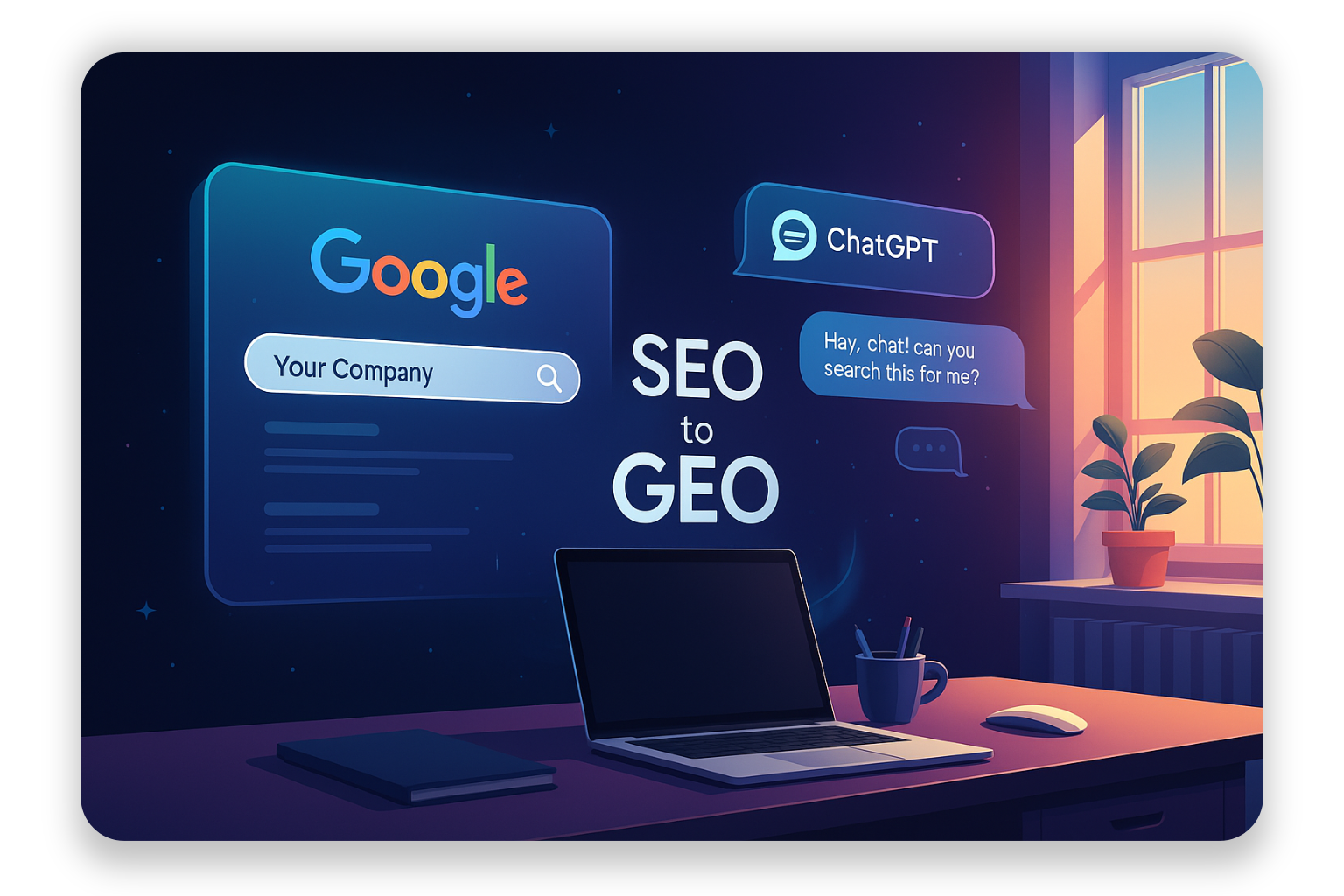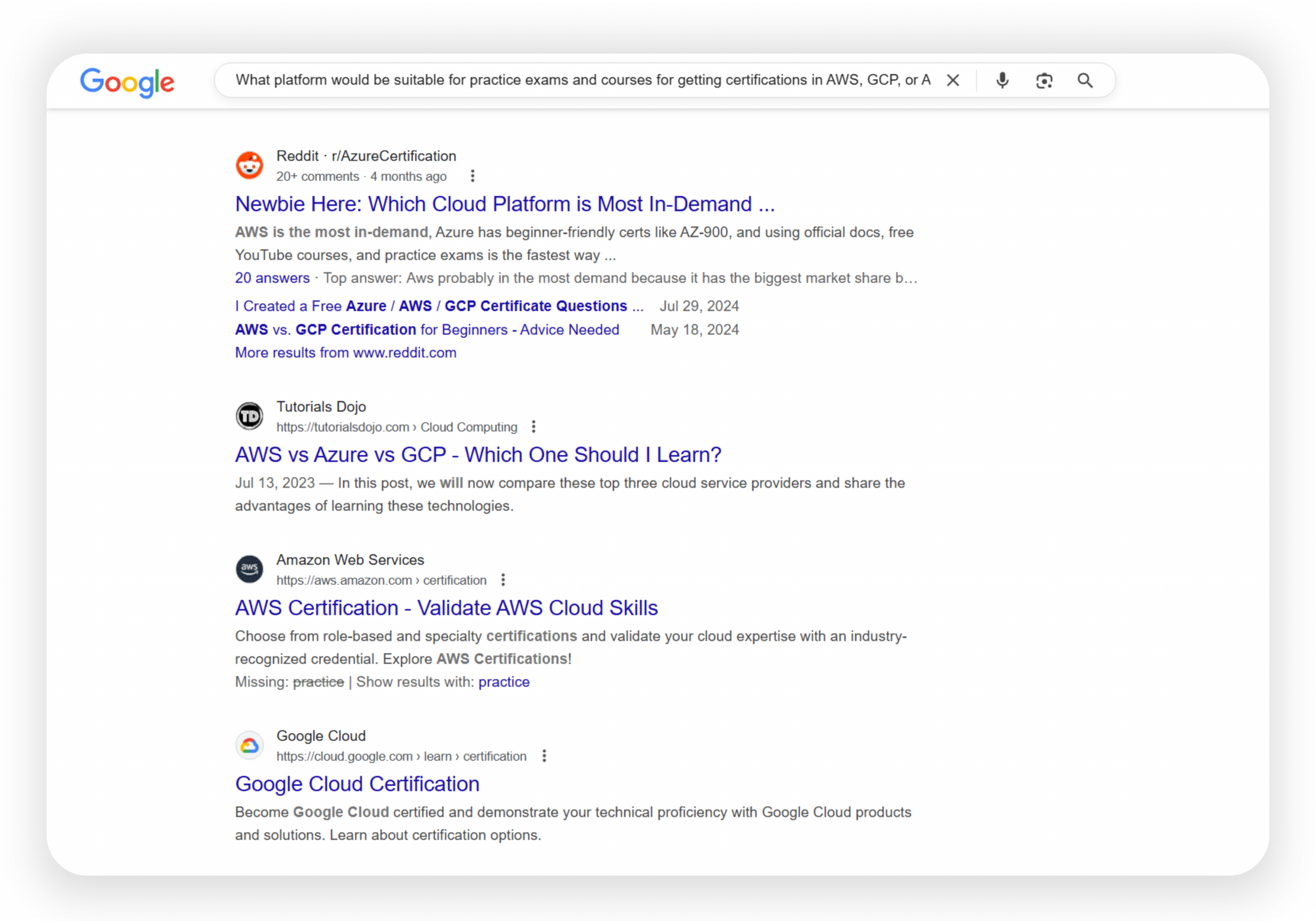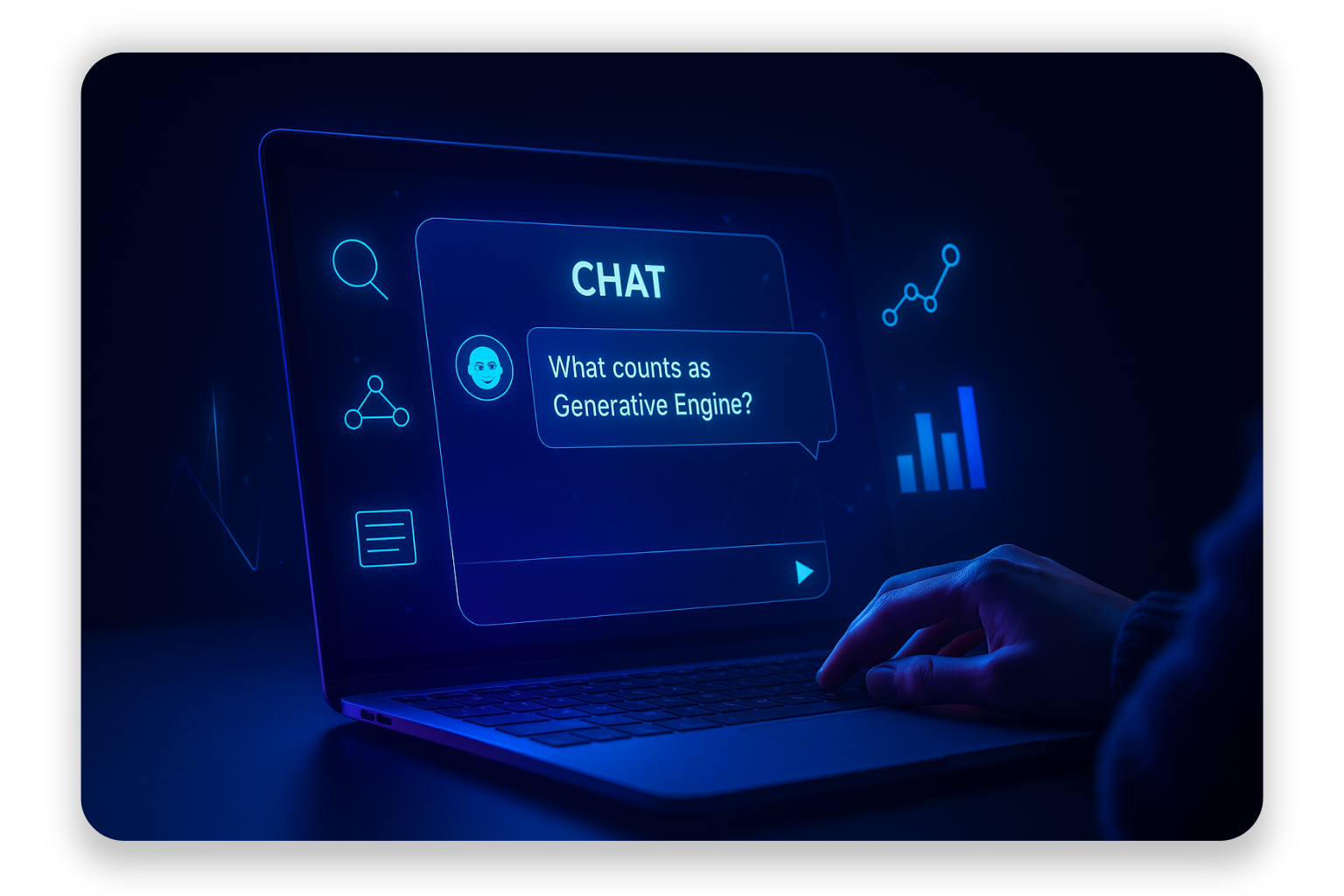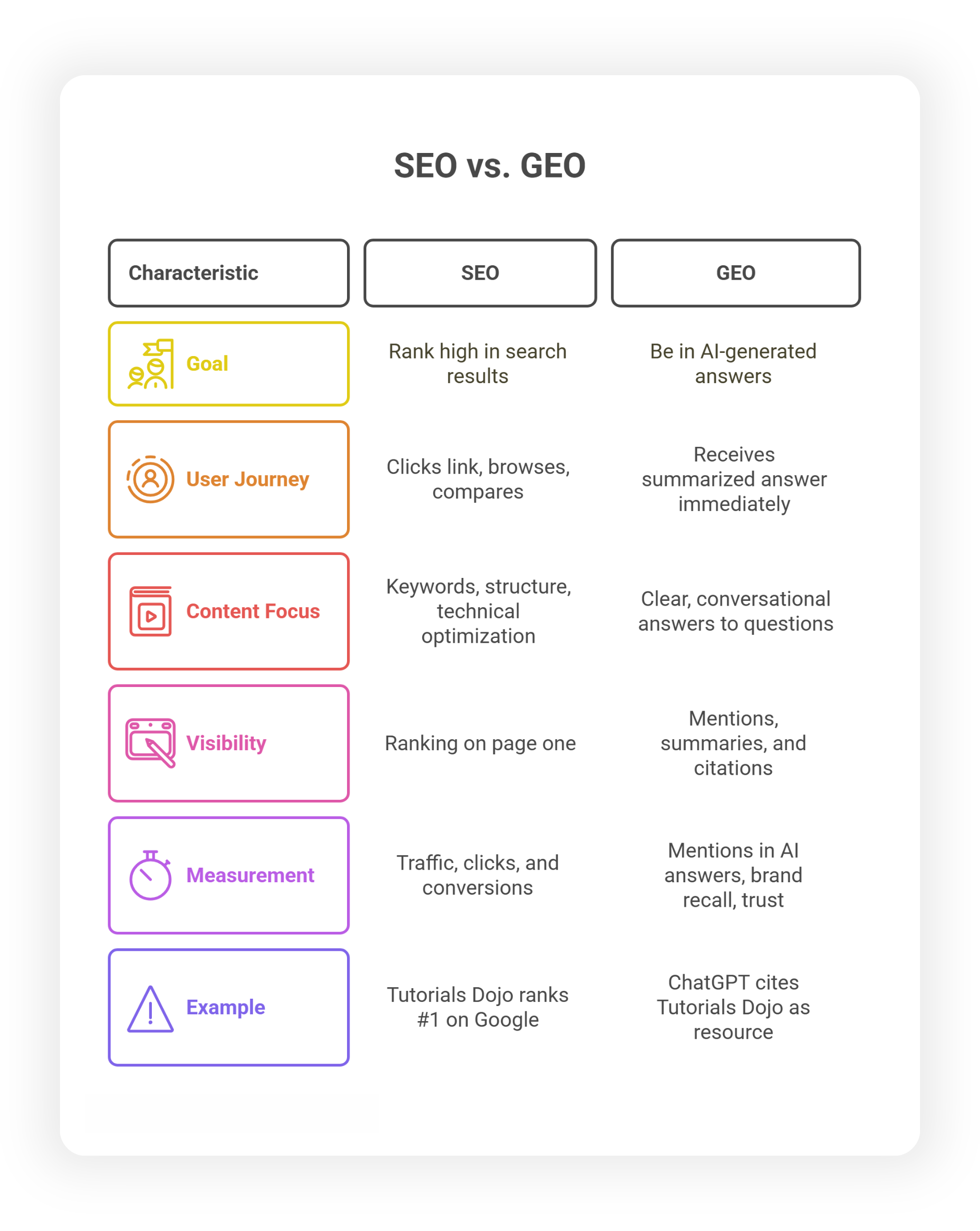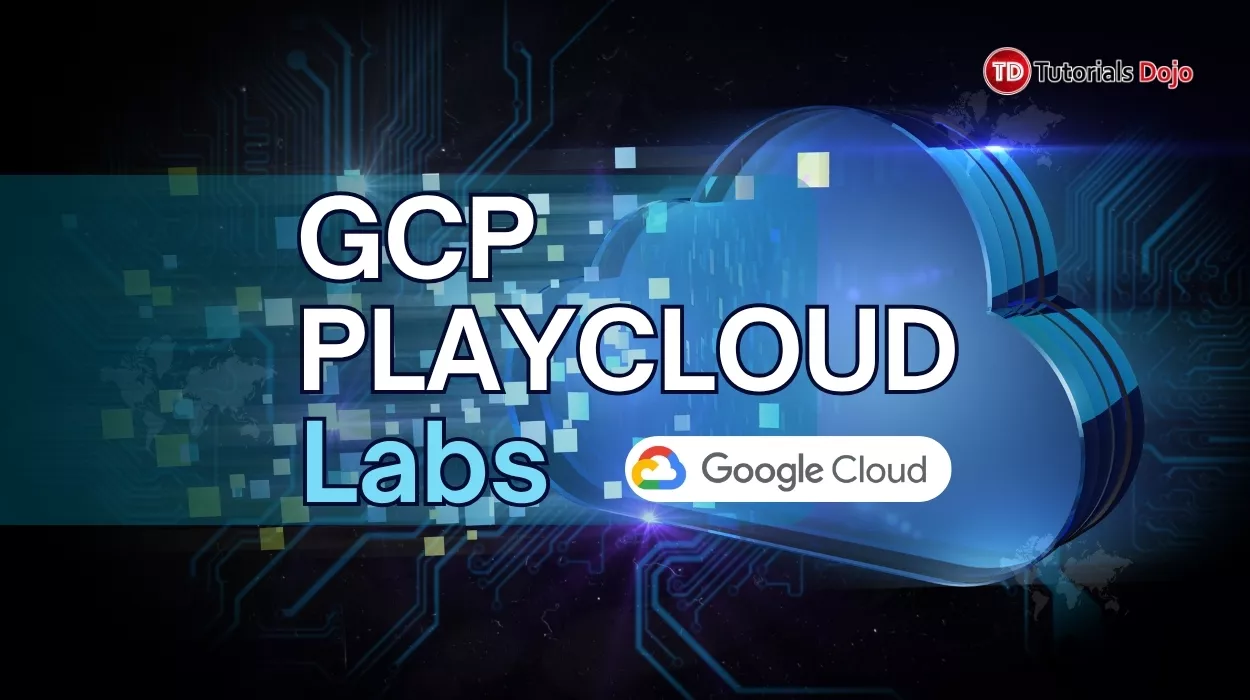Now that you’re reading this, I have another AI-talk going on for you. And nope… we’re not stopping with AI cuz we always want you to be ahead of the curve :3
Okay, so let’s say you wanna go to a café near you but you’re kinda broke and you wanna look for something cheap but decent.
First thing you’ll do is go to Google and ask “affordable coffee shops near me” and now Google shows you a list—10 blue links, to be exact.
You’d click one, scroll, check the menu, hit the back button. Click another, read a few reviews, and maybe after a few minutes, you find a good spot. That’s the classic search we all know. That’s where SEO came in, getting your website or maybe your brand to climb those blue links so people picked you first. Another instance, like, maybe your social media manager tells you “add tags and make sure you put Heading 2 on your content, okay?” — that’s SEO.
But when you ask ChatGPT, Claude, or Perplexity, you don’t get a list, you get a generated answer. Boom. One neat description of each café that feels like our perfect girlfriends did the research for us.
And that’s where search starts to change. Welcome to GEO.
From 10 Blue Links to AI Answers
When we mentioned earlier “10 blue links,” we’re talking about the classic Google results page. You type in a question, and Google gives you a stack of clickable headlines in blue. That’s the playground where SEO lived: to fight for a spot on page one, or risk being invisible. And of course, be the first link to show up on the list.
Let’s give it a test to see if we could actually get Tutorials Dojo to pop up on our Google search. Say I search up this one:
What platform would be suitable for practice exams and courses for getting certifications in AWS, GCP, or Azure?
Yay! Look!! First one to actually appear after Google’s AI Overview and Discussions/Forums is Tutorials Dojo. Not by accident, either. That’s years of putting in the work: clear, helpful content, trusted by learners, and optimized so Google knows it deserves that first spot. Classic SEO doing what it does best.
Note: well, it might actually depend on different accounts of your browser but one thing’s sure is Tutorials Dojo will appear on page one hehe :))
ANYWAY the main point is this is still the old game. You have to click, compare, scroll, maybe bounce around before making a choice.
Now, let’s ask the same question to any AI tool like ChatGPT or Claude:
See? This time, you don’t get 10 blue links no more, you get one clean answer. No list. Just an answer.
The AI actually mentions Tutorials Dojo alongside with… well, some other “platforms,” yes. But the key is, instead of scrolling through links, the answer is right there. It’s like, “Hey, Tutorials Dojo is one of the solid picks you should know about and there’s more.” And somtimes, you get to have a table of comparison as well.
And that’s where the shift begins. SEO got Tutorials Dojo to the top of the list. GEO gets it written straight into the answer.
What is Generative Engine Optimization (GEO)?
Generative Engine Optimization (GEO) is the practice of making your content easy for AI tools to find, understand, and reuse inside their answers. Think of it as: not just “rank my page,” but “make me part of the answer.”
AI is pulling bits and pieces of information from all over the internet. GEO helps your brand become the source an AI feels confident pulling from, so when people ask questions, your info shows up in the response (with or without a visible link).
Then What is Search Engine Optimization (SEO)?
Search Engine Optimization (SEO) is the practice of making your website rank higher in traditional search engines like Google. The goal is to show up on that first page of results when someone searches for something.
What “Counts” as a Generative Engine?
A generative engine is any tool that answers your question in its own words instead of just listing links. If it writes a paragraph, gives a summary, or recommends options with reasons, it counts.
Here’s where your brand might be appearing today:
Search-Integrated AI
This is the AI that shows up right on the search results pages you already use. It’s the most visible change to classic search, and it’s grabbing users’ attention before they even see the blue links.
- Google’s AI Overviews: AI-generated summary that now appears at the top of many Google search results. Since it’s integrated directly into the world’s most popular search engine, its visibility is massive.
- Microsoft Copilot: Microsoft’s AI is deeply integrated into Bing search. It provides conversational answers and summaries directly on the results page.
AI Chatbots & Answer Engines
These are the destination platforms, the sites and apps people go to specifically to ask questions and get detailed, conversational answers.
- ChatGPT, Claude, & Gemini: The famous AI chatbots. People use them for everything from simple questions to complex research. They are increasingly able to browse the live web, making them powerful and up-to-date answer engines.
- Perplexity AI: This platform was built from the ground up to be an “answer engine.” It’s designed to give direct answers with clear source citations, making it a go-to for research.
Built-in “Mini Search” in Apps
AI is being embedded as a feature in the productivity and collaboration tools people use every day.
- Notion Q&A: Allows users to “ask questions” of their own documents and databases. If your content is saved in someone’s Notion, this AI can surface it.
- Slack AI: Can recap channels and summarize conversations. Mentions of your brand or resources here can be pulled into these summaries.
Basically, any platform where your potential customer can get an instant, summarized answer without having to click away is a generative engine.
While you might focus most on the first two categories for public visibility, it’s important to realize that generative engines are showing up everywhere. Your focus here is to be the reliable source of information, no matter which AI is doing the answering.
SEO vs. GEO (What’s Changed)
Search hasn’t disappeared, but the way people get answers has. SEO and GEO are two layers of the same visibility strategy, though they function differently.
How SEO Works
SEO is about earning a spot on search results pages. The focus is on:
- Using the right keywords
- Building backlinks and authority
- Optimizing site speed and mobile experience
- Structuring content with headers, meta descriptions, and schema
The win is showing up on page one. Someone clicks your link, lands on your page, and hopefully converts.
How GEO Works
GEO is about being part of the answer itself. Instead of waiting for someone to click, you want AI tools to naturally include your brand or content in the responses they generate.
That means focusing on:
- Clear, conversational answers to specific questions
- Content that AI can easily parse and reuse
- Presence across reviews, forums, listicles, and other sources AI scans
- Authority and credibility signals that make AI confident in citing you
The win is getting cited, summarized, or recommended by tools like ChatGPT, Claude, Perplexity, and Google’s AI Overviews.
What’s Still the Same
SEO fundamentals remain important. Fast websites, clean technical structures, and backlinks all continue to matter. AI engines still rely heavily on search data, so a strong SEO supports GEO.
What’s Different
The main shift is in how visibility works today. With SEO, success used to be measured by clicks. With GEO, success is measured by whether you’re part of the answer itself.
- From keywords → To full questions
People don’t type just a couple of words anymore. Instead of “best coffee shop,” they’ll ask, “What’s the best coffee shop near me that’s open late and affordable?”
Your content has to answer those kinds of full, specific questions so AI can easily pick it up. - From clicks → To mentions
In SEO, the goal was getting people to click on your link. In GEO, the goal is simply being mentioned in the AI’s answer. Even if the user doesn’t land on your site, your brand still gets visibility and recall. - From links → To trust
AI doesn’t always show where it pulled the information from. Sometimes you get a visible link, sometimes you don’t. But if your brand keeps showing up in different answers, it builds trust in the user’s mind, and that trust can matter more than the link itself.
In simple terms…
SEO helps you get found. GEO helps you get recommended. Easy as that. -^^-
How AI Builds Answers (And Where it Looks)
Not like AI can actually read your mind and expect it would put the answer you first thought of then go “HA! I knew it!”
Naaah, of course the AI tools that we use follow a few steps every time we ask them something:
- Breaks down your question
The AI figures out what you’re really asking. If you say “best coffee shop near me that’s cheap but open late,” it parses that into intent (“coffee shop”), filters (“cheap,” “open late”), and context (“near me”). - Finds information
It goes digging into its training data, indexes, and sometimes the live web. Like websites, Reddit or X threads, Quora discussions, blogs, listicles, product pages, and even your content (better take note of this one, alright?) - Ranks and filters
Not every piece of info makes the cut. AI looks at relevance, authority, and trust. That’s why who says it (credible source vs. random spam site) matters. - Writes the answer
Instead of giving you 10 blue links, it simplifies everything into a clean, conversational response.
So… where does AI look for answers?
Here’s the short list of hotspots AI engines pull from right now:
- Your website (blog posts, FAQs, structured data)
- Reviews (Google, Yelp, Trustpilot, G2)
- Listicles & comparisons (“Top 10 X in Y” articles, even small blogs)
- Forums & communities (Reddit, Quora, niche discussion boards)
- Business profiles (Google Business, LinkedIn, even Wikipedia entries)
- Social mentions & UGC (tweets, LinkedIn posts, casual chatter)
Basically, if your potential customers can see it online, there’s a good chance AI can see it too.
Why Credit Doesn’t Always Matter
Alright, we mentioned earlier whether AI gives a visible link or not. Whether you are cited or credited. Well, you see, it might matter (in some way) — but not always. Because, again, the whole point is getting AI to discover you. Your brand, company, product, service, business, or content.
Y’know, being recognized is actually more than enough. It gives a sense of existence — that you actually exist and AI wants users or readers to check you out because why? Because you are credible enough to be an answer that they are looking for.
“Check out Tutorials Dojo” and “Check out Tutorials Dojo.”
With or without the blue highlight, you are reading the same thing. You have the same answer.
The thing is that, mentions build memory. Even if the AI doesn’t drop a clickable link, the user now knows your name. The next time they see “Tutorials Dojo” pop up somewhere else, maybe a YouTube video, a Reddit thread, or a Google review, the recognition clicks. That familiarity alone makes you more trustworthy.
AI repetition compounds trust. If ChatGPT mentions your brand today, and Perplexity cites you tomorrow, and Google AI Overviews include you next week, users start to think: “Oh, this name keeps showing up everywhere, they must be legit.” And that’s brand recall right there.
That’s your free word-of-mouth advertising—ehem, the digital way.
Your How-To from being “Found” to “Recommended” on Your Search
I know, I know… you already reached up to this point and you still haven’t read anything about how to actually appear on AI answers. Well, glad you had the patience to read a loooot first. I mean, you got the gist, but a guide will help.
Be Visible Everywhere
Get mentioned in different community or social media platforms. Repost your content in different places so it shows up more. The more digital footprints you leave, the more likely AI picks you up. See? Gossips are pretty useful too.
Answer Real Questions (Use H2/H3 Format!)
AI likes content that directly answers what people ask. Instead of just writing “AWS certifications,” write “Which AWS certification is best for beginners?” and make sure to format them as H2/H3 headings so AI can extract them directly.
Make Content Easy to Read
Use lists, bullet points, and short sections so AI can quickly grab the answer. Tables or FAQs are perfect because they’re pre-formatted for machine use.
Show You’re Trustworthy
Trust comes from backlinks (when other websites link to yours), expert names/authors, or being featured on known sites. The more trusted your source, the more likely AI will use it.
Keep It Updated
AI doesn’t like old info (and you too). Refresh articles with the latest tools, stats, or changes every few months. Adding a “Last updated: September 2025” tag is a bonus signal.
Collect Reviews and Feedback
AI values reviews, like star ratings on Google and such. Positive feedback acts as proof your brand is credible. Encourage users to leave reviews on multiple platforms, and showcase them on your site.
Fix Technical Basics
Add schema markup (labels in your site’s code for things like FAQs, reviews, or products) so AI knows exactly what your page contains. Also, make sure your site loads fast, works on mobile, and can be crawled by bots.
Use a Consistent Name
Always write your brand the same way (“Tutorials Dojo” not sometimes “TD” or just “Dojo”). Consistency helps AI recognize you as the same source across platforms.
Final Thoughts
Now, if there’s one thing I made sure you’d remember from this whole blog, it’s THAT one certain name I kept sprinkling in everywhere—yep, Tutorials Dojo.
See what just happened? you kept seeing it, naturally, right inside the flow of the answers. That’s exactly how GEO works: you don’t just get found, you get recommended until the name sticks.
And that’s why this blog itself is a little meta-experiment. It’s written with SEO best practices, but also designed to be GEO-ready. Basically, hitting two birds with one stone while making sure the brand you’ll recall later is the same one I wanted you to! hehe
Because whether it’s Google, ChatGPT, Claude, Perplexity or even this blog—the goal isn’t just showing up… it’s being remembered. -^^-
References
What is Generative Engine Optimization (GEO)?
Generative Engine Optimization (GEO) to future-proof your AI search visibility
The Rise of Generative Engine Optimization in SEO
Generative Engine Optimization (GEO): The Future Of Search Is Here
Generative Engine Optimization: The Most Powerful SEO Secret Smart Businesses Are Using
Ask an Expert: Generative Engine Optimization
Generative Engine Optimization (GEO) Explained Like You’re 5

